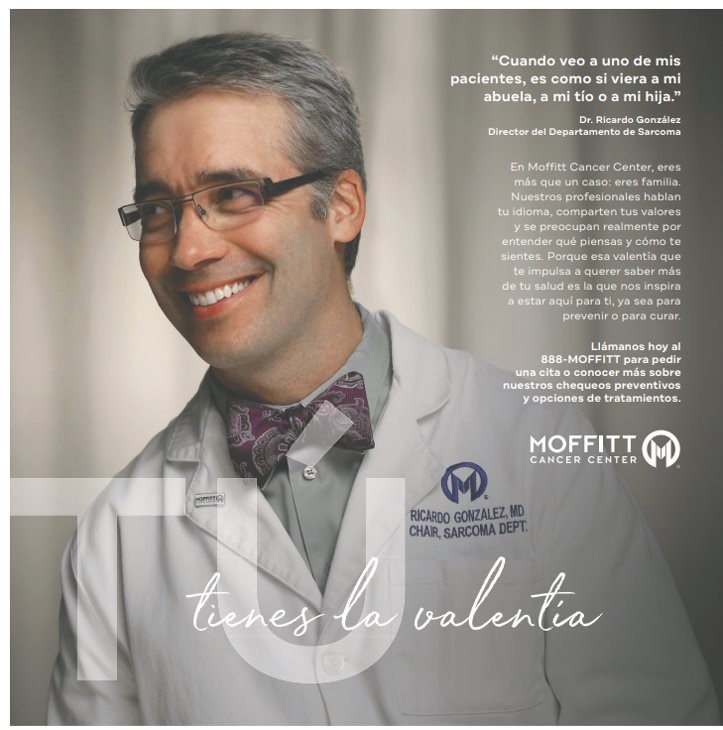MARKETING
Effective Health Care Marketing to Hispanics Understands Cultural Nuance
When creating marketing campaigns and messages directed toward Hispanics, it is important to understand the cultural nuances and sensitivities of this diverse community.
That was among the insights several marketing experts presented during a highly rated session of the 2021 SHSMD Connections conference in San Antonio.
“Not every person in America has a shared opinion of — or experience with — the health care industry. Health is important enough to dedicate resources to understand those segments that might need different messages,” says Peggy Weber Kiefer, co-presenter and senior health care strategist at Core Creative, a health care marketing agency based in Milwaukee.
“Everybody’s going to have a sizable minority population,” explains José Villa, co-presenter, and president and chief strategy officer of Sensis, an integrated cross-cultural marketing agency based in Los Angeles. “There are going to be cultural nuances from diverse populations that you have to take into consideration when crafting health care messages.”
The educational session focused on understanding these nuances and challenges, and offered opportunities and best practices for Hispanic health care marketing.
“I think at a macro level, it’s about audience-appropriate messaging that’s centered on empathy, and that’s something that is relevant to all communicators,” Kiefer says. “And at a micro level, it’s about the process and thinking behind one particular effort.”
Research Is Paramount
To craft messages that resonate with specific populations, Kiefer and Villa agreed: Do your research. Most importantly, marketers must understand why broad-based messaging is not resonating with this target population, Kiefer notes.
“You have to ask a lot of questions,” she explains. “And then you have to determine if the barriers to entry that you discovered during the conversations can be overcome. If they are, you have a purpose for starting new conversations.
“Research uncovers commonalities and generalizations about an audience,” Kiefer adds. “Individuals are still individuals with their own unique way of processing information and making decisions. But I think when you base your strategy on data, you have a solid starting place. The general insights can be translated successfully into general messaging, which should be tested before going to market so that you can tweak as needed.”
For example, an important consideration for Hispanic marketing is understanding whether communication needs to occur in Spanish, Villa says. A market that is primarily third-generation, English-speaking Hispanics will likely obtain and consume media differently than a community that is made up of mostly first-generation immigrants, where Spanish is often dominant, he says.
“That’s not always an easy question to answer,” Villa notes. “Research will usually tell you that. You have to understand the demographics of your Hispanic community.”
In addition, understanding the cultural nuances of the Hispanic community is critical, as well as making sure that you incorporate those nuances regardless of the language of the materials, Villa says.
“Whether you’re a hospital, a health plan, a device manufacturer or a pharmaceutical company, there are going to be very different cultural nuances that you have to understand in communicating your product or service,” Villa says.

Cultural Nuances Include Hesitation
During the session, Kiefer shared how careful research helped Moffitt Cancer Center, in Tampa, Fla., gain valuable insight to inform the development of messaging directed at members of their local Hispanic communities.
“I think the macro elements of the campaign strategy are applicable anywhere in the U.S. But, in order to make the messaging most effective, local research or some sort of intel-gathering would be recommended,” Kiefer says.
Villa also shared insights from Sensis’ work on the “All of Us” campaign, a National Institutes of Health program designed to improve precision medicine by gathering health data from a diverse set of people across the United States.
“Probably the biggest finding was the importance of understanding some of the ingrained cultural hesitation and concern there is in the Hispanic community around participating in medical research,” Villa says. For example, some Hispanic people believe participating in any kind of medical research makes them essentially a guinea pig.
“That comes from a lot of historical issues in home countries,” Villa explains. “That was probably the biggest finding that we had to incorporate into our messaging.”
Other key insights mentioned in the session were the importance of family and the unique definition of community among Hispanic people.
What can marketers do right now to reach new demographics? Kiefer and Villa emphasize the importance of research.
“In the session, we mentioned to the group that learning about underserved populations can be a grassroots effort,” Kiefer says. “Reach out to leaders in your community and ask questions. Engage people within your organization who are connected to the people you want to serve. Seek to understand.”
“Do the research, big or small, before you jump in,” Villa says. “There’s a lot of free data out there. We’re in 2022; we’re fresh off of the 2020 Census. That data is really robust. There’s so much good information in that data that’s accessible to everybody.”
Ultimately, it’s important to understand the complexity and importance of Hispanic communities, Villa says. “Minority communities represent a significant opportunity for all health care marketers, all health care companies, and one that has not historically been catered to in the past. So, it’s a challenge, but it’s also a huge opportunity.”
“I think trying to be sensitive is a good first step,” Kiefer notes. “Acknowledge that, as a marketer, you bring your own biases. Sometimes our knowledge base needs to expand if we want to create messaging that leads to better health in our communities.”
This article features interviews with:
Peggy Weber Kiefer
Senior Healthcare Strategist
Core Creative
José Villa
President & Chief Strategy Officer
Sensis
image credits: Images from 2021 SHSMD Connections 2021 Annual Conference session presented by José Villa and Peggy Weber Kiefer